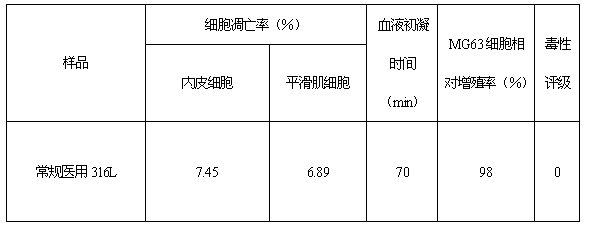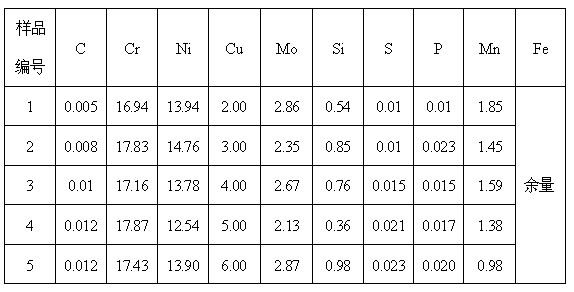Method for reducing incidence of in-stent restenosis and special stainless steel material thereof
A stent material, stainless steel technology, applied in stents, medical science, surgery, etc., can solve the problem of appropriate dosage half-life, achieve the effect of reducing restenosis in the stent and the incidence of restenosis
- Summary
- Abstract
- Description
- Claims
- Application Information
AI Technical Summary
Problems solved by technology
Method used
Image
Examples
Embodiment
[0022] In this embodiment, different contents of copper elements are added to the medical 316L stainless steel, the chemical composition is shown in Table 1, and different heat treatment processes are used, see Table 2 for details. For the new 316L copper-containing stainless steel material for coronary artery stents that can effectively reduce the incidence of in-stent restenosis, the conventional medical 316L stainless steel was used as the control material, and flow cytometry detection, dynamic coagulation detection and MTT biocompatibility were carried out. The experimental results are shown in Tables 2 and 3.
[0023] Table 1 Chemical composition of 316L type copper-containing stainless steel (weight%)
[0024]
[0025] Flow Cytometry:
[0026] The apoptosis rate of 316L copper-containing stainless steel on endothelial cells (HUVEC) and vascular smooth muscle cells (VSCMs) was measured by flow cytometry. This method can objectively evaluate the effect of copper-contai...
PUM
 Login to View More
Login to View More Abstract
Description
Claims
Application Information
 Login to View More
Login to View More - R&D
- Intellectual Property
- Life Sciences
- Materials
- Tech Scout
- Unparalleled Data Quality
- Higher Quality Content
- 60% Fewer Hallucinations
Browse by: Latest US Patents, China's latest patents, Technical Efficacy Thesaurus, Application Domain, Technology Topic, Popular Technical Reports.
© 2025 PatSnap. All rights reserved.Legal|Privacy policy|Modern Slavery Act Transparency Statement|Sitemap|About US| Contact US: help@patsnap.com



